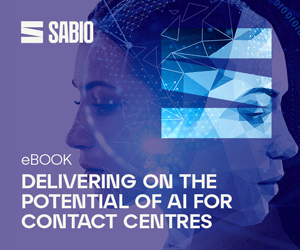Paul Stockford of Saddletree Research introduces us to predictive routing and how it can help you to better meet generational expectations.
The global contact centre industry is standing on the cusp of a new era in the customer experience, bringing with it changes to the contact centre industry that are unprecedented.
The primary drivers behind these expected changes are the preferences, expectations, and demands of the next generation of customers; the Millennials and Generation Z.
With Baby Boomers and, to some extent, Generation Xers declining as the majority consumer population, Millennials and Gen Z are poised to move into a position of prominence as consumers.
The Next Generation of customers will also bring with them a distinctly different set of expectations and requirements when it comes to the customer experience.
This growing generation of consumers brings with them a unique set of attitudes toward various aspects of customer service, such as communications, information access, technology support and brand loyalty.
In general terms, secondary research tells us that the next generation of customers will not have the patience of previous generations when it comes to customer service. These customers grew up with information at their fingertips, delivered quickly and conveniently.
Why should they tolerate anything less when it comes to their customer service experience? Their expectation will be for a customer service experience as intuitive and responsive as every other application on their smartphones.
Basically, this is a customer who won’t have the patience or understanding to be transferred from one agent to another during a customer service call.
Generation Z is the first truly digital native generation, meaning they have never lived in a world without the internet. They operate at digital speed and expect the same from their customer experience. Information access for this generation has always been fast and logical. Efficiency is highly important to this generation.
One factor common to both Millennials and Gen Zers is their propensity to share their experiences on social media, including service experiences both good and bad.
Brand loyalty is almost non-existent among this customer demographic and they won’t hesitate to take their business to another company after just one bad customer service experience.
One of the contact centre practices that has changed the least over the past 40 years is inbound customer call routing. 40 years ago, an inbound customer call was routed to the first available agent regardless of that agent’s skills, experience, or ability to handle the requirements of an individual caller.
Call routing strategies today haven’t changed substantially from what they were 40 years ago. With the exception of skills-based routing, which routes calls to specific groups based on a broad definition of skills, inbound calls still go to the first available agent.
If any contact centre is going to survive the generational customer experience changes that the entire industry is now facing, this relatively primitive means of routing incoming customer calls must be retired in favour of a call routing strategy appropriate for the next generation of customers. The answer to this rapidly emerging call routing challenge is predictive behavioural routing.
In 2018, NICE acquired call routing solutions leader Mattersight. Mattersight introduced predictive behavioural routing in 2014 and revolutionised the concept of efficient call routing and the customer experience.
Rather than simply routing the call to the first available agent, the predictive behavioural routing server communicates with the ACD to intelligently route calls to the best available agent based upon customer personality, behavioural data, and communications.
NICE added a healthy dose of analytics to Mattersight’s behavioural modelling and its industry-leading database of customer behavioural profiles so each incoming call is optimised in terms of routing to the agent whose skills and ability best match the profile of the customer caller.
Predictive behavioural routing represents the beginning of a new era in efficient call routing in response to the expectations and requirements of the next generation of customers.
Matching customers with agents with the right skill set to best meet the customers’ needs and behavioural profiles will not only optimise the customer experience, it will provide the contact centre with the significant cost savings that come with increased First Call Resolution (FCR) and decreased Average Handle Time (AHT).
Author: Robyn Coppell
Published On: 25th Mar 2019 - Last modified: 26th Mar 2019
Read more about - Guest Blogs, NiCE




































